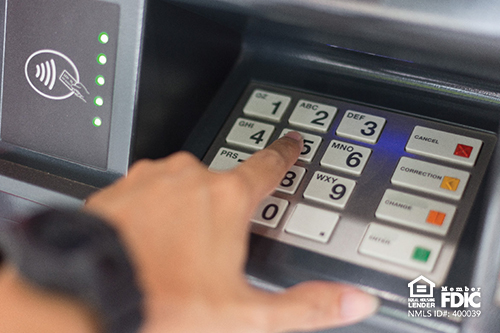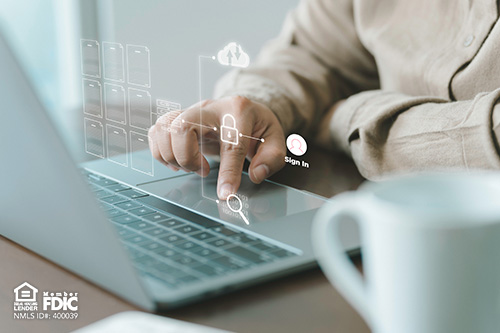In the digital age, debit card skimmers significantly threaten financial security. Often hidden in plain sight, these devices can steal your card information in seconds.
Understanding how skimmers work is the first step toward protecting yourself. Knowing what to look for and how to respond if you suspect skimming is crucial.
This blog aims to provide you with the knowledge to safeguard your debit card from skimmers. We'll explore the mechanics of skimming, common locations for these devices, and proactive measures you can take.
By staying informed and vigilant, you can secure your financial information and stay one step ahead of skimmers.
Understanding Debit Card Skimmers
Debit card skimmers are malicious devices attached to card readers. Hackers design them to steal your card's data when you swipe or insert it into the reader.
People often use these devices at ATMs and gas station pumps. Spotting them can be challenging because they are designed to blend in with the machine they are attached to.
The Mechanics of Skimming
Skimmers work by reading the magnetic strip on your card. This strip contains all the information needed to make a transaction, including your card number and expiration date.
Once the skimmer obtains this data, it can create counterfeit cards or make online purchases. This is why it's so important to protect your card from skimmers.
Recognizing Skimmers: What to Look For
Recognizing a skimmer can be challenging, but there are some telltale signs. These include a card reader that sticks out more than usual or looks different from other machines.
- Look for any loose parts or adhesive residue.
- Check if the colors and materials match the rest of the machine.
- Be wary if the card reader moves when you wiggle it.
Remember, if something doesn't feel right, it's better to be safe than sorry. Use a different machine or transact inside the bank or gas station.
Prevalent Locations and How to Use ATMs Safely
ATMs and gas station pumps are the most common locations for debit card skimmers. Criminals often target these places because they are used frequently and can easily be tampered with.
When using an ATM, there are several precautions you can take to protect your card:
- Inspect the machine before using it. Look for any signs of tampering.
- Shield the keypad with your palm while typing in your PIN. This can prevent hidden cameras from capturing your PIN.
- Use ATMs in well-lit, high-traffic areas. Criminals are less likely to target these locations and add skimmers.
Inside the Bank vs. Outside: A Comparison
ATMs located inside banks are generally safer than those outside. Security cameras often monitor them, making them less accessible to skimmers.
However, this doesn't mean they're entirely safe. Always inspect the ATM before using it, even inside a bank. Protecting your financial information is better safe than sorry.
Proactive Measures to Protect Your Debit Card
Protecting your debit card from skimmers requires a proactive approach. You must regularly check your bank statements for unauthorized transactions, which allows you to spot and report any suspicious activity quickly.
Consider setting up transaction alerts with your bank. This provides real-time monitoring of your account. You will receive immediate notification if any unusual activity is detected.
Here are some additional measures you can take:
- Use contactless payments to avoid skimming.
- Keep your PIN confidential and change it regularly.
- Use RFID-blocking wallets to protect against electronic pickpocketing.
- Keep your card's contact information up to date for fraud alerts.
- Educate elderly family members about skimming scams.
Anti-Skimming Devices and Their Effectiveness
Anti-skimming devices can be a valuable tool in protecting your card. Designers created these devices to prevent skimmers from reading your card's information. They work by disrupting the skimmer's ability to capture data.
However, they're not foolproof. Skimmers are constantly evolving, and some may be able to bypass these devices. Therefore, it's essential to combine anti-skimming devices with other protective measures.
The Role of EMV Chips in Preventing Skimming
EMV chip technology has significantly reduced card skimming incidents. Unlike magnetic stripes, which hold the same data, EMV chips create a new transaction code for each transaction, making it much harder for skimmers to steal usable data.
Despite this, EMV chips aren't a complete solution. They can't prevent skimming when someone swipes the card's magnetic stripe instead of inserting the chip. Therefore, always opt for chip transactions when possible.
Immediate Actions if You Suspect Skimming
If you suspect that someone has skimmed your debit card, act promptly. Start by contacting your bank or card issuer. Report the incident and request that your card be frozen to prevent further transactions.
Next, file a report with your local law enforcement agency. They can investigate the matter and potentially recover your lost funds. Changing your PIN immediately is essential to prevent further unauthorized access to your account.
Reporting and Recovering from Skimming
Recovering from a skimming incident can be stressful. In addition to reporting the incident to your bank and law enforcement, consider alerting the Federal Trade Commission (FTC). They can provide further guidance on protecting your identity and recovering from fraud. Remember, swift action and open communication with your bank and the authorities are crucial to recovery.
Protecting your debit card from skimmers requires vigilance, awareness, and proactive measures. Stay ahead of fraudsters and learn how skimmers work.
Identify potential threats and take quick action when needed. Remember, your security is in your hands.




